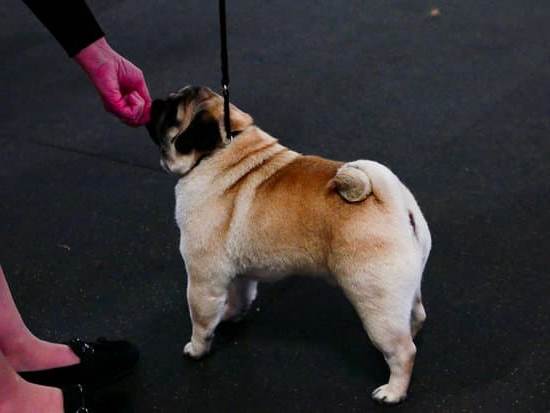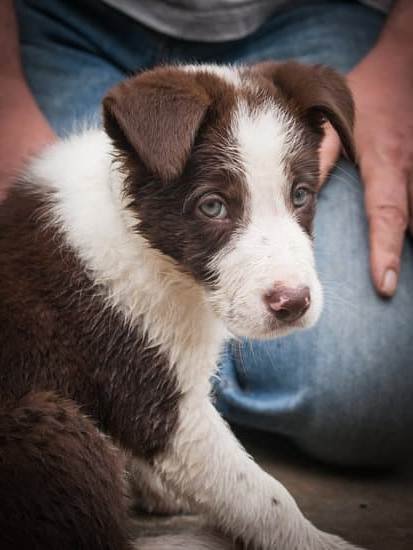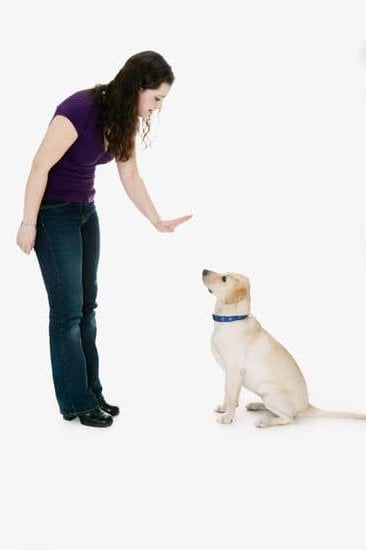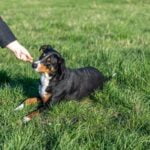Potty training is a crucial aspect of owning a dog, ensuring a clean and well-maintained living environment for both the pet and its owner. Puppy pads can play a significant role in this training process, providing a convenient and effective solution for managing your dog’s bathroom needs. In this article, we will explore the importance of potty training for dogs and discuss the role that puppy pads play in achieving successful results.
Potty training is not only about preventing messes and maintaining cleanliness but also about promoting good behaviors and establishing proper hygiene habits for your furry friend. By teaching your dog to use designated areas for elimination, you can minimize accidents and create a more harmonious living space. Puppy pads offer a practical solution by providing an easily accessible indoor toilet area that allows for efficient cleanup.
Understanding the fundamentals of potty training is essential, as it lays the groundwork for successfully teaching your dog to use puppy pads. By employing key principles and techniques specifically designed for potty training, you can effectively communicate with your canine companion and guide them towards proper elimination habits. Additionally, preparing your home by setting up the perfect potty training area with puppy pads creates a consistent environment that fosters positive learning experiences.
In the following sections of this article, we will delve into the various aspects of potty training on puppy pads, including choosing the right ones, introducing your dog to them, establishing a routine, reinforcing positive behaviors, troubleshooting common challenges, and eventually transitioning to outdoor elimination. By following these guidelines and utilizing proven strategies, you can set yourself and your dog up for success in their potty training journey.
The Basics of Potty Training
Potty training is an essential aspect of dog ownership, and using puppy pads can be a convenient and effective method for training your dog. However, it’s important to understand the basics of potty training before you start the process. By following key principles and utilizing proven techniques, you can successfully train your dog to use puppy pads.
Consistency is Key
Consistency is crucial when it comes to potty training your dog on puppy pads. Establish a designated area in your home where your dog will have access to the pads at all times. This could be a specific room or a sectioned-off area using baby gates. Make sure that the area is easily accessible for your dog and has enough space for them to move around comfortably.
Positive Reinforcement
Positive reinforcement plays a significant role in potty training your dog on puppy pads. Every time your dog successfully eliminates on the pad, immediately praise them with enthusiasm and give them a treat or verbal reward. This reinforces the desired behavior and encourages them to continue using the pads. Avoid scolding or punishing your dog for accidents as this can create fear and anxiety around eliminating in front of you.
Patience and Persistence
Potty training takes time, so it’s essential to be patient and persistent throughout the process. Understand that accidents may happen, especially during the initial stages of training. If you catch your dog in the act of eliminating outside of the designated area, quickly redirect them to the correct spot without punishment or yelling. With consistent guidance and repetition, your dog will gradually learn to associate going potty with using the puppy pads.
By following these key principles of consistency, positive reinforcement, patience, and persistence, you can effectively train your dog to use puppy pads for elimination. Remember that every dog is unique, so some may pick up on this training faster than others. Stay dedicated to the process, and soon enough, your furry friend will become a potty-trained pro on puppy pads.
Preparing Your Home
When it comes to potty training your dog on puppy pads, one of the crucial steps is preparing your home to create a designated potty training area. This section will guide you on how to set up the perfect potty training area with puppy pads, ensuring that your dog has a comfortable and accessible place to do their business.
The first step in setting up the potty training area is selecting an appropriate location within your home. Choose a quiet and easily accessible area that is away from high-traffic areas, as this will help minimize distractions and accidents. It is also important to choose an area that can be easily cleaned in case of any accidents.
Once you have selected the location, it’s time to gather the necessary supplies. You will need a suitable size of puppy pads, depending on the size and breed of your dog. Make sure to choose high-quality pads that are absorbent and leak-proof to avoid any messes. Additionally, consider using a potty pad holder or tray to prevent the pads from moving around or being chewed by your dog.
To set up the potty training area, place the puppy pads in a specific spot within the chosen area. Make sure they cover enough space for your dog to comfortably eliminate without missing the pad. If you are using a holder or tray, secure the pads inside it to keep them in place. You may also want to use some adhesive tape or double-sided tape along the edges of the pads for added stability.
Creating a consistent environment is key during potty training. Avoid moving the puppy pad area around and keep it separate from your dog’s sleeping or eating areas. To prevent confusion, do not place their water bowl near the puppy pads either.
By following these steps and setting up an appropriate potty training area with puppy pads, you are providing your dog with a comfortable and consistent spot to do their business. This will help establish good potty habits and make the training process smoother for both you and your furry friend.
| Supplies Needed | Considerations |
|---|---|
| Suitable size of puppy pads | Choose absorbent and leak-proof pads that match your dog’s size |
| Potty pad holder or tray | Prevents pads from moving around or being chewed by your dog |
| Adhesive tape or double-sided tape | Provides added stability to keep the pads in place |
Choosing the Right Puppy Pads
Factors to Consider when Choosing Puppy Pads
When it comes to choosing the right puppy pads for potty training, there are several factors that you should consider. Firstly, it is important to look for pads that are absorbent and have leak-proof technology. This ensures that any urine or liquid waste is contained and does not seep through onto your floors. Additionally, consider the size of the pads in relation to your dog’s size and breed. Larger dogs may require bigger pads to accommodate their needs.
Another factor to consider is the durability of the pads. Some puppies may have a tendency to shred or chew on their pads, so opting for ones that are tear-resistant can help prolong their lifespan. Furthermore, choose pads that have a scent deterrent feature if you want to discourage your dog from using them as a play area.
The Best Options Available in the Market
There are numerous puppy pad options available in the market, making it essential to choose one that suits your specific needs and preferences. One popular choice is the AmazonBasics Pet Training Pads, known for their superior absorption and quick-drying properties. These pads also have built-in attractants that draw dogs towards them when it’s time to relieve themselves.
If you prefer an eco-friendly option, consider the Four Paws Wee-Wee Eco-Friendly Dog Training Pads made from recycled materials. These pads boast excellent absorbency while being environmentally conscious.
For large dog breeds, All-Absorb Extra Large Training Pads offer ample space and high absorbency capacity.
It’s worth mentioning that no single brand will work perfectly for every dog, so don’t be afraid of experimenting with different brands and types until you find one that fits well with your pet’s needs and preferences.
By considering these factors and exploring various options available in the market, you can ensure that you select high-quality puppy pads for effective and convenient potty training.
Introducing Your Dog to the Puppy Pads
Once you have set up the perfect potty training area with puppy pads, it is time to introduce your dog to this new setup. Familiarizing your dog with the potty training area is an important step in the potty training process. Here are some effective strategies to help your dog become comfortable using the puppy pads:
- Positive Association: The key to introducing your dog to the puppy pads is to create a positive association with them. You can start by placing the pads in an area of your home where your dog spends a lot of time, such as a designated corner or room. Make sure that your dog has easy access to the pads.
- Scent Attraction: Dogs have a strong sense of smell, so using scent attraction can be helpful in getting them interested in using the puppy pads. You can try placing a small amount of urine or feces on the pad initially, as this will help stimulate their natural instinct to eliminate in that area.
- Verbal and Visual Cues: Another effective strategy is to use verbal and visual cues when introducing your dog to the puppy pads. Choose a specific command or phrase that you will consistently use when bringing your dog to the potty training area. Each time you bring your dog near the pads, say the command and point towards them, so they begin associating these cues with using the pad.
To further assist you during this introduction phase, here are some additional tips:
- Supervision: It is crucial to closely supervise your dog during this period to prevent accidents and reprimand any unwanted behaviors.
- Consistency: Stick to a regular schedule for taking your dog to their potty training area. Consistency will help reinforce the desired behavior.
- Patience and Encouragement: Be patient with your dog as they adjust to the new training routine. Use verbal praise and rewards when they successfully eliminate on the puppy pads to encourage them and reinforce positive behavior.
By following these strategies, you can effectively introduce your dog to the puppy pads and help them become familiar with their designated potty training area. Remember to remain patient, consistent, and provide positive reinforcement throughout the process.
Establishing a Potty Training Routine
One crucial aspect of potty training your dog on puppy pads is establishing a consistent routine. A regular schedule helps dogs develop good bathroom habits and strengthens the bond between you and your furry friend. In this section, we will provide you with a step-by-step guide on how to set a consistent schedule for your dog’s bathroom breaks.
- Determine the Ideal Bathroom Schedule: Dogs have different elimination needs based on their age, breed, and size. Puppies generally need more frequent bathroom breaks compared to adult dogs. Consider factors such as your dog’s age, bladder capacity, and previous potty breaks when determining the ideal schedule.
- Set Specific Times for Bathroom Breaks: Once you have determined the ideal bathroom schedule for your dog, establish specific times for bathroom breaks throughout the day. For instance, taking your dog out first thing in the morning, after meals or playtime, before bedtime can prevent accidents indoors.
- Stick to a Regular Feeding Schedule: Feeding your dog at fixed times each day will help regulate their bowel movements and make it easier to predict when they may need to go outside. It’s advisable to feed your pup two to three times daily at the same time every day.
- Use Potty Cues: Teach your dog a specific command or cue that signals it’s time for them to go potty. This can be a word such as “go potty” or using bells by hanging them on the door handle that they can ring when they need to go outside.
- Take Your Dog to the Designated Potty Spot: When it’s time for a bathroom break, lead your dog straight to the designated area with puppy pads where they are meant to eliminate. By consistently going to the same location each time, they will quickly associate that area with going potty.
By following these steps, you can successfully establish a potty training routine for your dog on puppy pads. Consistency and patience are key, as it may take some time for your furry friend to fully adapt to the schedule. Remember to reward your dog with treats or praise when they successfully use the designated area, as positive reinforcement encourages good habits and helps make the potty training process more enjoyable for both of you.
Reinforcing Positive Behaviors
Reward-based training methods and techniques are essential tools in potty training your dog on puppy pads. By using positive reinforcement, you can encourage your dog to use the pads consistently and reinforce their good behaviors. Here are some effective strategies to help you reinforce positive behaviors during the potty training process:
- Treats: Using treats as rewards is a common method for reinforcing positive behaviors. Whenever your dog successfully uses the puppy pad, immediately reward them with a small treat and verbal praise. This will create a positive association with using the pad and motivate them to continue doing so.
- Verbal praise: Alongside treats, verbal praise plays an important role in reinforcing positive behaviors. Always use a happy, upbeat tone when praising your dog for using the puppy pad correctly. Be consistent with your chosen phrases, such as “Good job” or “Yes.” This will help your dog understand that they have done something right.
- Clicker training: Clicker training is another useful technique to reinforce positive potty training behaviors. By associating a click sound with rewards, you can mark the exact moment your dog successfully eliminates on the pad. After clicking, promptly reward your dog with a treat to strengthen the connection between the click and the desired behavior.
Remember that consistency is key when using reward-based training methods. It’s important to reward your dog immediately after they eliminate on the puppy pad so that they can make a clear connection between their action and the rewards they receive.
| Training Method | Description |
|---|---|
| Treats | Using small treats as rewards for successfully using the puppy pad. |
| Verbal praise | Using a happy tone and specific phrases to verbally praise your dog for using the pad correctly. |
| Clicker training | Using a click sound to mark the desired behavior followed by a treat reward. |
By employing these reward-based training methods and techniques consistently, you can create positive associations with using puppy pads and establish good potty training habits in your dog. Remember to be patient, as each dog learns at their own pace. With time and consistency, your furry friend will become comfortable using the pads and have greater success in their potty training journey.
Troubleshooting Common Challenges
One of the most common challenges that pet owners face during the potty training journey with puppy pads is accidents. Accidents are to be expected, especially in the beginning stages of training. It’s important to remember that accidents are a normal part of the learning process for your dog. Instead of getting frustrated or angry, it’s essential to respond calmly and take immediate action.
When accidents occur, it’s crucial to clean up the mess promptly and thoroughly. Dogs have a keen sense of smell, and if they can still detect their scent in an area, they may continue to eliminate there. Cleaning up accidents with enzymatic cleaners specifically designed for pet stains and odors can help remove any lingering scents that might attract your dog to the same spot again.
It’s also important not to punish or scold your dog when accidents happen. Punishment can create fear or anxiety around eliminating, which can hinder their progress in potty training. Instead, focus on reinforcing positive behaviors and providing encouragement when they use the puppy pad correctly. Positive reinforcement techniques such as giving treats or verbal praise will make your dog more likely to repeat this behavior in the future.
Relapses are another common challenge that pet owners may experience during potty training with puppy pads. A relapse occurs when a dog who was previously successfully using puppy pads regresses and starts having accidents again indoors. Relapses can happen for various reasons, such as changes in routine, stress, or medical issues.
Addressing a relapse requires patience and consistency. It’s essential to assess if any changes have occurred in your dog’s environment or routine that might have triggered the relapse. If you identify any potential causes, try to address them accordingly.
In some cases, it may be helpful to reinforce crate training during a relapse. By confining your dog in a crate when unsupervised, you can prevent accidents and gradually reintroduce them to using puppy pads successfully.
If a relapse persists or if you encounter any other challenges during the potty training journey, it may be helpful to consult with a professional dog trainer or behaviorist. They can provide personalized guidance and strategies to overcome specific hurdles and ensure successful potty training with puppy pads. Remember, every dog is different, and patience and persistence are key to achieving success in potty training.
Gradual Transitioning
Transitioning from puppy pads to outdoor elimination is an important milestone in the potty training journey of your dog. This gradual transition helps your dog understand that eliminating outdoors is the desired behavior. By following a few simple steps, you can effectively teach your dog to make this transition successfully.
The first step in the gradual transition process is to start moving the puppy pads closer to the door leading outside. Begin by placing the pads near the door where you eventually want your dog to go outside for elimination. This helps your dog associate the scent of their waste with being near the door.
Next, gradually move the pads closer to the actual outdoor area where you want your dog to eliminate. Start by moving the pads a few feet away from the door each day until they are located right outside. During this time, be sure to closely supervise your dog and offer plenty of positive reinforcement and praise when they use the pad in its new location.
Once your dog consistently eliminates on the pad placed directly outside, it’s time to remove the pad altogether and encourage them to eliminate directly in their designated outdoor spot. Take your dog out on a leash and bring them directly to their potty area every time they need to go. Use command words or phrases such as “go potty” or “do your business” consistently during this process.
Remember, consistency is key during this transitional period. Stick to a regular schedule for bathroom breaks and always reward your dog with praise or treats when they eliminate in their designated outdoor spot. It’s important not to get discouraged if there are occasional accidents during this phase, as it takes time for dogs to fully adjust and establish new habits.
By gradually transitioning from puppy pads to outdoor elimination, you are helping your dog develop good potty habits that will last a lifetime. With patience, consistency, and positive reinforcement, you can successfully teach your furry friend how to eliminate outdoors like a champ.
Graduating from Puppy Pads
Transitioning your dog from using puppy pads to fully eliminating outdoors is an exciting milestone in their potty training journey. It signifies that your furry friend has mastered the basics of potty training and is ready for the next step. However, this transition can sometimes be challenging, so it is essential to approach it with patience and consistency. Here are some final steps and tips to help you successfully graduate your dog from puppy pads.
Firstly, gradually reduce the size of the potty training area. Start by making the space smaller by removing a few puppy pads each day. This will encourage your dog to explore other areas of your home to find a suitable spot for elimination. Make sure to keep a close eye on them during this process and promptly redirect them if they show signs of needing to go.
Next, start taking your pup outside regularly to designated outdoor elimination areas. Choose an area that is easily accessible and consistently take them there after meals, playtime, and waking up from naps. Use command words like “potty” or “go pee” as you did with the puppy pads to establish a verbal cue for elimination.
Reward and praise your dog whenever they successfully eliminate outdoors. Positive reinforcement plays a crucial role in reinforcing desired behaviors, so make sure to have plenty of treats handy during these outings. By associating going outside with positive experiences, you will motivate your dog to prefer eliminating outdoors over using puppy pads.
It’s important to remember that accidents may happen during this transitioning phase. Don’t get discouraged or punish your canine companion if they have setbacks. Instead, continue reinforcing consistent bathroom habits by promptly cleaning any accidents indoors without drawing attention or scolding them.
Eventually, with persistence and consistency, your pup will become accustomed to eliminating exclusively outdoors. As they demonstrate reliable behavior, gradually eliminate the use of puppy pads altogether until they are no longer needed. The duration of this transition may vary depending on each dog’s individual progress, so be patient and use positive reinforcement consistently.
In conclusion, transitioning your dog from puppy pads to fully eliminating outdoors is an achievable goal with the right approach and consistency. Gradually reducing the size of the potty training area, introducing designated outdoor elimination areas, rewarding positive behaviors, and providing consistent feedback are key steps in ensuring a successful transition.
Remember to be patient and understanding throughout the process, as every pup learns at their own pace. With time and commitment, you will celebrate the day when your furry friend can confidently eliminate outside without the need for puppy pads.
Frequently Asked Questions
How do you potty train a puppy on pads fast?
When potty training a puppy on pads, it’s important to establish a consistent routine and reinforce positive behavior. To train a puppy on pads quickly, start by placing the pads in a designated area of your home that is easily accessible for the puppy. Whenever you notice signs that your puppy needs to relieve itself, such as sniffing or circling, bring them to the pad immediately.
Encourage them to use the pad by using positive reinforcement techniques such as verbal praise or treats when they do their business on the pad. Consistency is key, so be patient and repeat this process each time your puppy needs to go until they learn to associate the pad with bathroom time.
How long does it take to train a puppy on pee pads?
The length of time it takes to train a puppy on pee pads can vary depending on several factors such as the individual puppy’s age, breed, temperament, and consistency in training. Generally, it can take anywhere from a few weeks up to a few months for a puppy to become fully trained on pee pads.
It’s important to remember that every dog is different and may require more or less time than average. It’s crucial not to rush or become frustrated during this process because consistent training efforts are more effective in achieving long-lasting results.
Do puppy pads make it harder to potty train?
Puppy pads themselves do not necessarily make it harder to potty train; however, their use may extend the duration of the overall training process compared to other methods like crate training or outdoor training. This is because using pads may create confusion for some puppies about where they’re supposed to eliminate eventually if you plan on transitioning them outside later on. If you decide to use pee pads initially, it’s essential to consider gradually shifting your puppy towards eliminating outdoors when they are ready for it.
This transition involves slowly reducing the number of available pads indoors while simultaneously encouraging and rewarding outdoor elimination. By doing so consistently and positively reinforcing correct behavior, you can minimize any potential difficulty in potty training associated with relying solely on puppy pads.

Welcome to the blog! I am a professional dog trainer and have been working with dogs for many years. In this blog, I will be discussing various topics related to dog training, including tips, tricks, and advice. I hope you find this information helpful and informative. Thanks for reading!





